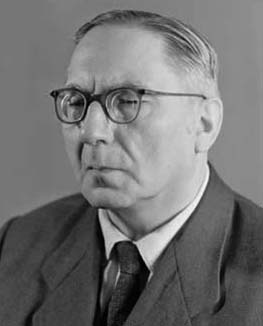


 تاريخ الرياضيات
تاريخ الرياضيات
 الرياضيات في الحضارات المختلفة
الرياضيات في الحضارات المختلفة 
 الرياضيات المتقطعة
الرياضيات المتقطعة
 الجبر
الجبر
 الهندسة
الهندسة 
 المعادلات التفاضلية و التكاملية
المعادلات التفاضلية و التكاملية 
 التحليل
التحليل
 علماء الرياضيات
علماء الرياضيات |
Read More
Date: 27-7-2017
Date: 27-7-2017
Date: 27-7-2017
|
Died: 26 December 1966 in Leningrad, USSR (now St Petersburg, Russia)

Mikhail Fedorovich Subbotin's father, Fedor Subbotin, was an army officer. Subbotin entered the Faculty of Physics and Mathematics at Warsaw University in 1910. At this time the University of Warsaw was a Russian university and Warsaw was in "Vistula Land", as it was called, under Russian control. Russia had implemented a policy to have "Vistula Land" dominated by Russian culture. In a policy implemented between 1869 and 1874, all secondary schooling was in Russian. Warsaw only had a Russian language university after the Polish University of Warsaw was closed by the Russian regime in 1869.
At the Russian University of Warsaw, Subbotin was awarded the Copernicus Scholarship after a competition run by the department. Although mainly interested in mathematics at this stage, he did begin to find an interest in astronomy when he worked as a calculator for the university observatory. Subbotin graduated from the University of Warsaw in 1914 and began his career with an appointment as a junior astronomer at the university.
World War I began in 1914 and, by the end of the year, Russian forces controlled almost all of Galicia. However, the Central Powers (Germany and Austria- Hungary) recaptured Galicia and large parts of Congress Poland. The Russian University of Warsaw was evacuated to Rostov-on-Don in 1915 and Subbotin went with the rest of the university. A German governor general was installed in Warsaw and a new Kingdom of Poland was declared on 5 November 1916 but by this time Subbotin was working for his Master's Degree in Rostov-on-Don.
In 1917 Subbotin submitted his thesis and was awarded his Master's Degree in Rostov-on-Don. Despite his early appointment as a junior astronomer, Subbotin's work at this time was firmly in the area of mathematics. He had already published two papers prior to submitting his Master's thesis, one was On the determination of singular points of analytic functions while the second was published in France and was on singular points of certain differential equations.
From the evacuated university in Rostov-on-Don, Subbotin moved to the Polytechnic Institute in Novocherkassk. First he was appointed there as an assistant, but soon was made a Privatdozent, then promoted to professor of mathematics. In 1921, while progressing well in his career in Novocherkassk, Subbotin received an invitation to work at the Main Russian Astrophysical Laboratory. He accepted the offer and left Novocherkassk in 1922 to take up a position as Director of the Russian Astrophysical Laboratory in Tashkent.
The Russian Astrophysical Laboratory in Tashkent had been created out of the Tashkent Observatory and, in 1925, the Tashkent Observatory became independent again with Subbotin as the first Director of the newly re-established Observatory.
From 1930 he worked in astronomy and celestial mechanics at Leningrad (St Petersburg) University being appointed as head of the astronomy department there. He held a variety of posts such as Chairman of the Department of Celestial Mechanics (1935-44), Head of the Theoretical Section of Pulkovo Observatory (1931-34), and Head of Leningrad University Observatory (1934-39).
World War II began near the end of 1939 and, in June 1941, Germany invaded the Soviet Union. By September 1941 German armies and the armies of their ally Finland were close to Leningrad. The whole population of the city took part in its defence building antitank fortifications round the city while 200,000 troops of the Russian army defended the city. By November 1941 Leningrad was almost completely cut off.
The siege took a huge toll on the population with 650,000 dying in 1942 from starvation, disease, or more directly from German artillery. In 1942 one million of the children, the sick, and the elderly were evacuated from the city. Subbotin nearly died of hunger in the siege but, seriously ill, he was evacuated in February 1942 just in time to save his life. It is worth noting that Leningrad held out and by January 1944 the German troops were driven back and the siege lifted.
Subbotin had been taken to Sverdlovsk in February 1942 to recover his health. The University of Leningrad was re-established at Saratov and by the end of 1942 Subbotin was in Saratov as the Director of the Leningrad Astronomical Institute. Subbotin recommended that the Institute become the Institute of Theoretical Astronomy of the USSR Academy of Sciences in 1943 and his recommendation was followed. When the situation allowed, the Institute was returned to Leningrad with Subbotin as its head.
Subbotin's early work was in the theory of functions and probability. Later he worked in celestial mechanics producing new methods of calculating orbits from three observations based on solving the Euler-Lambert equations. His astronomy work used his mathematical skills and [1]:-
... Subbotin not only showed the possibility of improving the convergence of the trigonometric series by which the behaviour of perturbing forces is represented, but also gave an expression for determining Laplace coefficients and presented formulas for computing the coefficients of the necessary members of the trigonometric series.
Books:
Articles:



|
|
|
|
للعاملين في الليل.. حيلة صحية تجنبكم خطر هذا النوع من العمل
|
|
|
|
|
|
|
"ناسا" تحتفي برائد الفضاء السوفياتي يوري غاغارين
|
|
|
|
|
|
|
نحو شراكة وطنية متكاملة.. الأمين العام للعتبة الحسينية يبحث مع وكيل وزارة الخارجية آفاق التعاون المؤسسي
|
|
|